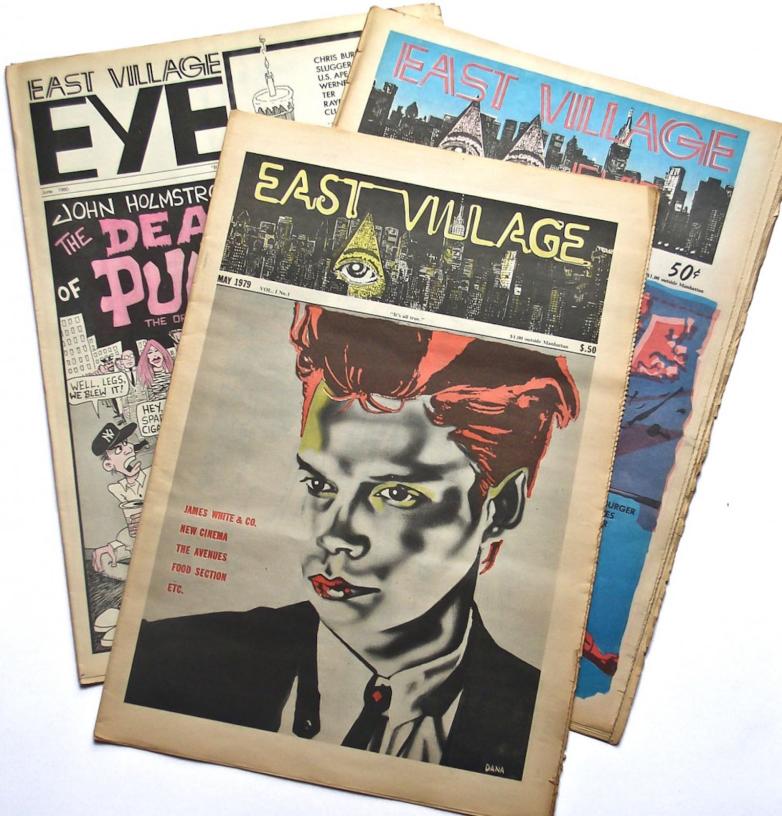New York Public Library’s Archive of East Village Eye Newspaper Opens to the Public

A selection of East Village Eye covers, 1979-1987
The New York Public Library’s extensive archive of the groundbreaking East Village Eye has been processed and is now available to researchers. The 1980s newspaper documented the development of the East Village and played a pivotal role in establishing the 'downtown scene' during a transformative decade.
Founded by Leonard Abrams, who served as its editor-in-chief throughout its run, the East Village Eye was a groundbreaking and influential underground newspaper published between 1979 and 1987. The Library is the only public institution in the world that houses a complete run of the Eye, with 72 issues in total.
Julie Golia, Associate Director, Manuscripts, Archives, and Rare Books and Charles J. Liebman Curator of Manuscripts said: “We are looking forward to seeing the creative ways that the collection will be used by scholars, students, educators, artists, activists, and anyone passionate about the history and culture of downtown New York City.”
At its height, the East Village Eye boasted a circulation of about 10,000 copies a month, available in New York City and at various outposts across the United States, but with worldwide subscriptions. Administrative papers include photographs and letters of people reading their copy of the Eye in Madrid, Minneapolis, and beyond. The collection also documents the daily workings of a small publication – advertising, correspondence, datebooks, financial records, and more. Contributors included resident advice columnist Cookie Mueller, Richard Hell, and David Wojnarowicz, and the newspaper featured images from dozens of acclaimed photographers early in their careers, from Patrick McMullan to Andres Serrano.
The Library bought the archive from the newspaper’s founder and editor Leonard Abrams in 2023. Highlights of the collection include:
- extensive administrative records and founding business documents for the magazine, including correspondence with staff, contributors, advertisers, and readers over the course of the Eye’s eight-year run
- Abrams’s handwritten pocket planners showing his relationship with artists, musicians, businesses, and writers across the neighborhood and beyond
- promotional materials created by the Eye, including maps and guides of the East Village and invitations and flyers for Eye-affiliated parties, openings, and events
- photography of the downtown scene by a roster of acclaimed photographers employed or engaged by the Eye, including Marcia Resnick, Eric Kroll, and Timothy Greenfield-Sanders
- candid and behind-the-scenes snapshots of Abrams and the Eye staff and contributors at work and as participants in the neighborhood’s vibrant nightlife
- a significant collection of original art, mixed-media collages, and comic-strip panels by artists including Lynda Barry, Tuli Kupferberg, Joseph Nechvatal, and Melora Walters
The records of the Eye will be essential to researchers studying the evolution of the punk movement, the growth of hip-hop, the rise of HIV/AIDS, and the early careers of artists like Basquiat, Mapplethorpe, and Fab Five Freddy.
Researchers can access the East Village Eye records in the Brooke Russell Astor Reading Room for Rare Books and Manuscripts at the Stephen A. Schwarzman Building.















